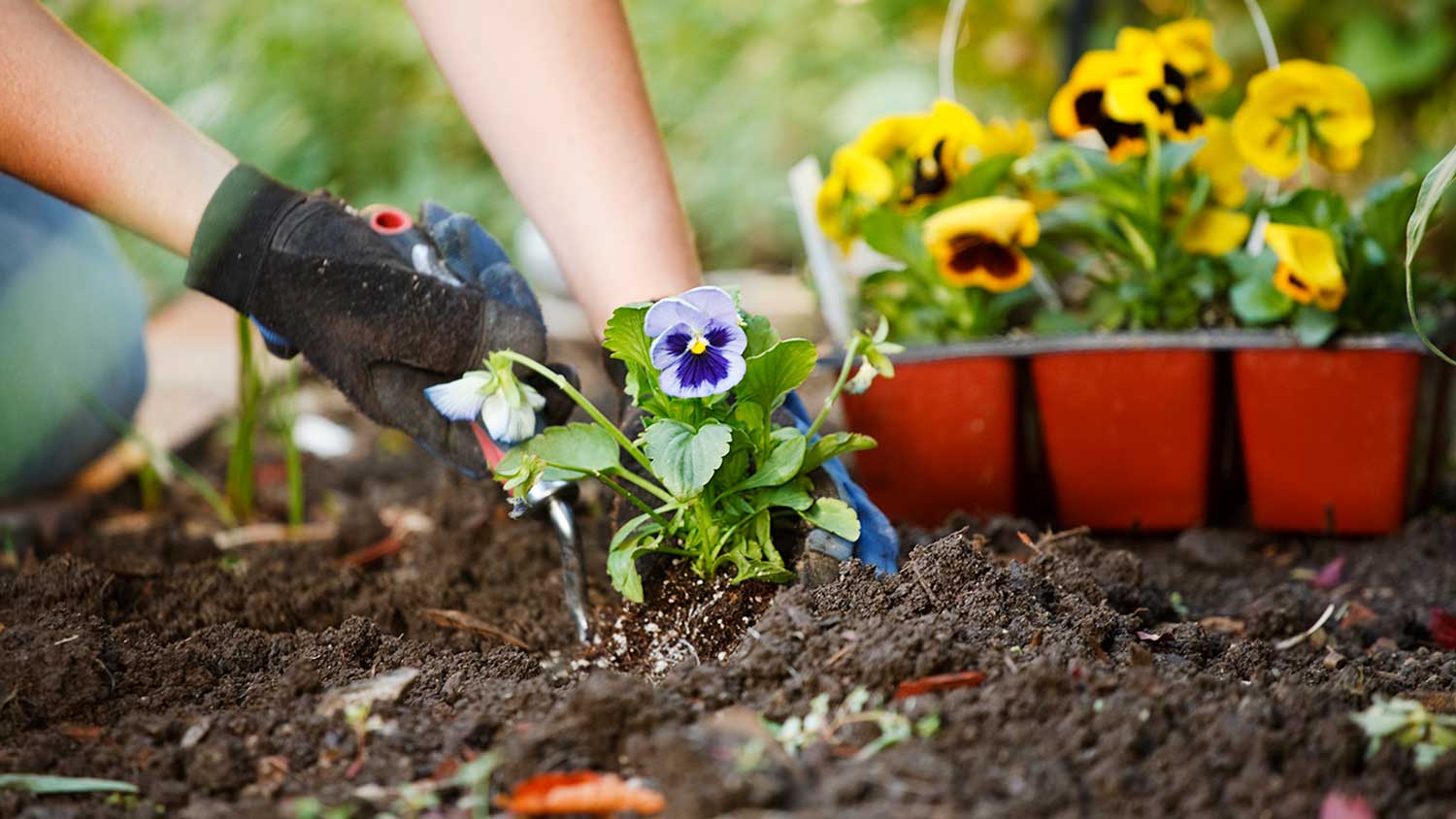10 Easy Tips for Spring Cleaning Your Landscape
Whip your landscape into warm-weather shape


Once the last frost passes and the weather starts to warm up, you should consider cleaning up your landscaping and yard. Doing this will help prepare it for a lush and healthy springtime bloom and boost your home’s curb appeal.
Read on to discover 10 of the best early spring landscaping tips to guarantee your yard heads into the new season with confidence and color.
1. Clean up Debris and Leaves
The first step to spring cleaning your landscape is to rid your yard of any trash, leaves, twigs, and other debris that has accumulated over the winter. Remove any dead plants, and once the threat of frost has passed, remove old mulch to make way for a new layer.
2. Prune Dead Branches and Trim Perennials
Check all your trees and prune back any branches that are dead from the winter cold. Perennials need to be cut back (to about 4 to 5 inches above the soil line) to make way for new growth, and to prevent overcrowding. Remove dead leaves and stalks from any perennial plants or grasses using scissors, which do a better job at handling this kind of detailed work.
3. Compost Yard Waste
Don’t let all those leaves go to waste—put them to work. Gather up all your collected, organic yard debris and place them in your compost bin to create an excellent fertilizer in the coming months.
4. Divide Perennials
Some of your perennials may need to be moved or divided so they don’t overcrowd and compete for water and nutrients. You should complete this task before these plants have bloomed with any new growth. Dig up your perennials and divide them into groups of three to five shoots, each with a healthy set of roots.

5. Plant New Plants
If you are planting new flowers to replace dead ones, choose ones that you are confident will be able to handle your climate and level of commitment. Some of the best spring flowers for beginners include pansies, violas, and snapdragons.
6. Remove Damaged Lawn
To prepare your lawn for spring, use a square metal rake to remove any areas that have been damaged by disease, snow plows, or salt and ready the soil for seedlings.
Place compost to keep the soil moist and healthy, and treat the area with a pre-emergent herbicide for crabgrass; crabgrass germinates when the soil temperature is between 55 and 60 degrees Fahrenheit, so be sure to apply the herbicide before it gets too warm.
7. Fertilize
Many groundcovers, shrubs, and perennials (such as roses, hydrangea, and azalea) will benefit from low-nitrogen, slow-release fertilizer sprinkled around the base of the plant (don’t apply it on the plant directly, which could burn the foliage). You can add pre-emergent weed control as well to prevent weed seeds from germinating.
8. Mulch
After fertilizing, add a new layer of mulch, which will prevent weed growth, maintain soil moisture, and prevent the soil from overheating. In addition, it also gives your landscaping a nice, finished look.
For shrub beds and around trees, use shredded hardwood or pine straw. For your perennials, apply leaf mold, compost, cocoa hulls, or pine fines. All mulches should be added in layers of one to two inches; just be sure to not place too much near the base so the roots don’t suffocate.
9. Tidy Up Hardscape
Sweep any runaway gravel back into its place on walkways and patios, and fill in any large depressions with new gravel. If your pavers have shifted during winter, remove them and add more paver base before replacing them.
Finally, pressure wash the hardscape to remove any stains or algae that has grown. If there are signs of mildew, which can grow beneath planters and debris, kill it with a solution of 2 cups of bleach, 2.5 tablespoons of powdered laundry detergent, and 1.5 quarts of warm water. Drench the area with the solution, let it set for 10 to 15 minutes, then scrub it off with a stiff broom before rinsing.
10. Clean Patio Furniture
Get ready for outdoor gatherings in warmer weather by making sure your patio furniture is refreshed. Mix a solution of warm water and liquid soap to clean patio furniture with a scrub brush. Rinse thoroughly with a hose and place the furniture on its side to hasten drying time.





- Landscapers
- Tree Surgeons
- Gardening Services
- Landscape Architects
- Sod Installation
- Tennis Court Contractors
- Landscape Design
- Retaining Wall Companies
- Grading Companies
- Landscape Rock & Sand Delivery
- Mulch Delivery Services
- Pond Companies
- Artificial Grass Companies
- Shrub Removal & Trimming
- Backyard Design Companies
- Commercial Landscaping
- Koi Pond Services
- Backyard Landscapers
- Trampoline Assembly
- Hedge Trimming
- Pond Services
- Garden Design
- Outdoor Plant Watering
- Putting Greens
- French Drains
- Turf Installation
- Sod Removal Services
- Lawn Repair Services
- Brush Chipping Services
- Hardscape Contractor
- Landscape Rock Removal
- 13 Fall Gardening Tips for a Beautiful Spring Bloom
- 13 Essential Landscaping Tips for a Beautiful Spring Garden
- 12 Early Spring Landscaping Tips to Prepare Your Lawn and Garden
- 10 Must-Know Yard Maintenance Tips, Whether You Own or Rent
- How to Spruce Up Your Existing Garden by Adding New Plants
- 47 Landscaping Ideas to Consider for Your Home
- How to Prepare Your Lawn for Winter: 10 Important Tasks to Do
- 13 Genius Low-Maintenance Front Yard Landscaping Ideas
- 12 Tips for Taking Care of Your Backyard, From Pruning to Weed Prevention
- How to Choose Perennial Flowers So Your Garden Flourishes










